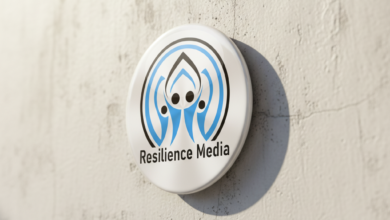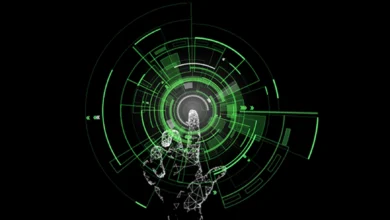
تعریف تاب آوری روانشناختی
به سوی یک تعریف موازی از تاب آوری روانشناختی: مروری بر ادبیات
Towards a Transversal Definition of Psychological Resilience: A Literature Review
تعریف تاب آوری روانشناختی: بررسی ادبیات ما نشان میدهد که تابآوری روانشناختی به روشهای مختلفی توصیف میشود. این اختلاف در اصطلاح می تواند مانع از تعریف مشترک این مؤلفه شود، که مقایسه بین نتایج تحقیق را محدود می کند و اندازه گیری عینی را دشوار می سازد.
بر اساس تجزیه و تحلیل ما از ادبیات، پنج مقوله کلان را شناسایی کردیم که از یک سو، عناصر تکرارشونده در تعریف تاب آوری را در آثار مورد بررسی خلاصه میکنند. از سوی دیگر، آنها چند بُعدی بودن مؤلفه را برجسته می کنند.
تاب آوری به عنوان توانایی بهبودی
در طول سالها، چندین نویسنده، تابآوری را به عنوان «توانایی بهبودی» توصیف کردند. با این حال، این عبارت به طُرق مختلف درک شده است. به طور خاص، برخی از نویسندگان تاب آوری را مبتنی بر توانایی بهبودی از ضربه، استرس، یا محرومیت تعریف می کنند.Definition of psychological resilience
دیگران آن را به عنوان تواناییِ خوب ماندن علیرغم مشکلات یا بهبودی کامل و سریع می دانند.
بازیابی همچنین به عنوان بازگشت به حالت تعادل، به عنوان یک توانایی رشد پس از سانحه، یا به عنوان یادگیری مهارت های مفید برای غلبه بر خطرات آینده در نظر گرفته شده است.
تابآوری با استفاده از موانع محافظتی در برابر استرس
نویسندگان دیگر تابآوری را با استفاده از موانع محافظتی در برابر استرس توصیف میکنند.
به طور خلاصه، توانایی بهبودی نشان دهنده تمایل فرد به حفظ تعادل درونی خود با وجود تجربه رویدادهای آسیب زا یا شرایط استرس زا است. علاوه بر این، ظرفیت تاب آوری نشان دهنده تواناییِ برخورد مثبت با رویدادهای آسیب زا و سازماندهی مجدد در مواجهه با مشکلات است.
ما دریافتیم که تابآوری همچنین در ادبیات بهعنوان «نوعی عملکردی که فرد را مشخص میکند» توصیف میشود.
عملکرد تاب آوری
عملکرد تاب آوری به عنوان توانایی هم برای حفظ سطوح قابل قبولی از سلامت روانی و جسمانی و هم برای بازگشت به حالت تعادل علیرغم ناملایمات در نظر گرفته شده است.تعریف تاب آوری روانشناختی
در این زمینه، ارجاع به ویژگیهای تاب آور از نظر ویژگیهای فردی یا ویژگیهای شخصیتی مانند استحکام و تدبیر ظاهر میشود، با برخی از نویسندگان تأیید میشود که این ویژگیها ذاتی هستند و تنها به صورت محدود تحت تأثیر محیط خارجی هستند.
سازگاری عملکردی با شرایط نامطلوب
سازگاری عملکردی با شرایط نامطلوب را می توان با تعامل بین عوامل محافظتی داخلی و عوامل خطر تسهیل یا مانع شد.

در این راستا، ادبیات اخیراً به سمت مفهوم تابآوری بهعنوان پدیدهای پیچیده که در آن عوامل متعددی از جمله ویژگیهای شخصیتی ذاتی، اهداف شخصی، و زمینه بیرونی و روانی- اجتماعی در آن نقش دارند، روی آورده است.
تعاریف تاب آوری مبتنی بر رفتارهای تاب آوری
با بررسی عوامل محافظتی که امکان اجرای رفتارهای تاب آوری را فراهم می کند، می توان دسته بندی های زیر را شناسایی کرد:
انعطاف پذیری شناختی، عاطفه مثبت و خوش بینی، شوخ طبعی، پذیرش، مقابله فعال، مذهب یا معنویت، نوع دوستی، حمایت اجتماعی، الگوسازی، ورزش، ظرفیتی برای بهبودی از رویدادهای منفی و تلقیح استرس.
به طور خلاصه، آنچه تابآوری را تعیین میکند، ویژگیهای شخصی است که بهعنوان عوامل محافظتی با وجود رویدادهای استرسزا یا آسیبزا شناسایی میشوند.Definition of psychological resilience
تاب آوری به عنوان ظرفیت بازگشت به عقب
دسته سوم از تعاریف، هرچند کوچک، به تاب آوری به عنوان «ظرفیت بازگشت به عقب» اشاره می کنند.
اگرچه این توصیف از تاب آوری به نظر می رسد مانند توانایی سازگاری باشد، ما معتقدیم که شایسته است در دسته دیگری قرار گیرد زیرا بر یک حالت واکنش خاص تأکید می کند، یعنی اشاره به برخی ویژگی های خاص.
بنابراین، تابآوری بهعنوان ظرفیت بازگشت به عقب، توانایی تداوم و رشد در مواجهه با عوامل استرسزا، کنار آمدن با وجود ناملایمات، و جهش از تجربه منفی را مشخص میکند.
تاب آوری به داشتن نتایج خوب با وجود ناملایمات و خطرات اشاره دارد و میتوان آن را با حفظ همان سطح از نتیجه یا بازگشت به آن سطح پس از یک شکست اولیه توصیف کرد.
به طور خاص، تابآوری بهعنوان «بازگشت به عقب» میتواند شامل بازگشت مجدد پس از مصیبت یا سازگاری مؤثر با ناملایمات باشد.
تاب آوری به عنوان فرایند پویای در حال تکامل در طول زمان
ساختار تاب آوری طی سالها نیز بهعنوان یک «فرایند پویای در حال تکامل در طول زمان» شناسایی شده است.
به طور خاص، فرآیند پویا در اینجا ابتدا به معنای تعامل بین عوامل محافظ داخلی و خارجی است که برای اصلاح اثرات شخصی یک رویداد نامطلوب عمل می کنند. ثانیاً، به تعامل بین ویژگیهای شخصی، فرآیندهای بیولوژیکی و منابع خانوادگی و اجتماعی اشاره دارد که میتواند فرآیندهای تابآور را ارتقا یا مانع شود.
در این مقوله کلان، می توان چندین وجه از معنای اصطلاح تاب آوری را شناسایی کرد.
تاب آوری به عنوان نیروی انگیزشی حیاتی فرد
برخی از نویسندگان تاب آوری را به عنوان نیروی انگیزشی حیاتی فرد تعریف میکنند که نگرش مبارزه مداوم و تمایل به تسلیم نشدن در برابر مشکلات را پیشبینی میکند، یا به عنوان نیرویی که میتواند در طول زمان در نوسان باشد و فرد را به سمت رشد از طریق ناملایمات یا وقفههای مسیر زندگی سوق دهد.
برخی دیگر بر توانایی ارتقای فرآیندهای رشد و شناسایی تاب آوری با یک وضعیت ذهنی پویا که می تواند با شرایط متغیر سازگار شود، تأکید می کنند.Definition of psychological resilience

تاب آوری به عنوان فرایندی در مسیر رشد
تاب آوری همچنین به عنوان فرآیندی تعریف می شود که از طریق آن افراد در مواجهه با ناملایمات زنده می مانند یا حتی رشد می کنند. هم شامل مجموعهای از خصایص یا ویژگیهای درونی، مانند سرسختی یا خودکارآمدی بالا، و هم شامل عوامل بیرونی مانند حمایت اجتماعی است که مهارتهای مقابله ای را ارتقا میدهد.
با توجه به اشارات بسیار زیادی که از حوزه ادبیات به معنای تاب آوری به عنوان ظرفیت سازگاری شده است، تصمیم گرفتیم این تعریف را در یک مقوله خاص، یعنی «انطباق مثبت با شرایط زندگی» قرار دهیم.
تاب آوری به معنای توانایی ترویج سازگاری مثبت
نویسندگان در توصیف تاب آوری با این عبارات، بر جنبه های مختلف این پدیده تأکید می کنند. برخی آن را به عنوان توانایی ترویج سازگاری مثبت علیرغم قرار گرفتن در معرض شرایط نامطلوب، استرس زا یا آسیب زا توصیف می کنند.
دیگران آن را به عنوان یک نگرش و رفتار انطباقی تعریف می کنند که به فرد اجازه می دهد تا از نظر روانی سالم بماند یا حتی پس از قرار گرفتن در معرض رویدادهای استرس زا، در وضعیت رشد پس از سانحه پیشرفت نماید.
تاب آوری و استفاده از منابع عاطفی جهت سازگاری با ناملایمات
بنابراین، تابآوری نشان میدهد که از منابع عاطفی برای سازگاری با ناملایمات استفاده میشود. بنابراین، میتوان آن را فرآیندی توصیف کرد که منابع (ظرفیتهای تطبیقی) را به نتایج (تطبیق) پیوند میدهد.
سایر نویسندگان توجه خود را بر مدت زمان این پدیده متمرکز می کنند. به ویژه، برخی تاب آوری را به عنوان یک پدیده موقتی توصیف می کنند که بر اساس شرایط زندگی و مرحله رشد، در معرض نوسان است. برای دیگران نشان دهنده یک مسیر پایدار عملیات در طول زمان است.
تحلیل ادبیات نشان میدهد که واژه تابآوری معنای واحدی ندارد و بسته به منظری که از آن تحلیل میشود، ظرافتهای متفاوتی به خود میگیرد.
تاب آوری به عنوان فرایند پویا در حال تکامل در طول زمان
در زمینه مطالعات تابآوری، بحثهای داغی در میان محققان وجود دارد، بهویژه بین کسانی که تابآوری را یک ویژگی شخصیتی میدانند که در طول زمان ثابت و پایدار است و بنابراین قابل اندازهگیری است («نوع عملکردی که مشخصه فرد است») و که آن را یک ویژگی شخصیتی نمی دانند، بلکه آن را به عنوان «فرایند پویا در حال تکامل در طول زمان» می دانند که به تعامل بین عوامل محافظتی و عوامل خطر اشاره دارد.تعریف تاب آوری روانشناختی
به طور خاص، اثرات عوامل محافظتی مانند “نوع عملکرد” تنها در حضور رویدادهای استرس زا قابل تشخیص است و نقش آنها اصلاح واکنش با وجود ناملایمات است.
تاب آوری به منزله مقابله مؤثر با شرایط نامطلوب
در عوض، «فرایند پویا» به عنوان تعامل مجموعهای از متغیرها توصیف میشود که امکان کاهش تأثیر را با شرایط خطر و در نتیجه مقابله مؤثر با شرایط نامطلوب فراهم میکند.
در «مقوله بازیابی»، علیرغم بی ثباتی ناشی از یک رویداد نامطلوب که تأثیر قابل توجهی بر فرد دارد، می توان رویکرد به بازگشت تدریجی به حالت اولیه – خوب ماندن و حفظ عملکرد مؤثر – را شناسایی کرد.
تاب آوری به عنوان ظرفیت بازگشت به عقب
بنابراین، به عنوان بازگشت به حالت اولیه تعادل درک می شود. در عوض، «ظرفیت بازگشت به عقب» به جای بازگشت به حالت اولیه ذهن، بر امکان رشد شخصی با وجود مشکلات، تغییرات یا رویدادهای آسیب زا تأکید می کند.
در لغت، “بازگشت” به معنای بازگشت و تغییر جهت است. این به تمایل به استقامت و تسلیم نشدن با فرض نگرش باز بودن نسبت به تغییر اشاره دارد.
تاب آوری به مفهوم انطباق مثبت با شرایط زندگی
ما دسته پنجم، «انطباق مثبت با شرایط زندگی» را به عنوان تعریف موازی با چهار مورد دیگر که شناسایی کردهایم، در نظر میگیریم زیرا مفهوم سازگاری مؤثر با رویدادهای زندگی در هر یک از آنها مستتر است.
با این وجود، از آنجایی که بسیاری از تعاریف در ادبیات بر مفهوم سازگاری مثبت برای تعریف تابآوری تمرکز میکنند، آن را بهعنوان مقولهای متفاوت از سایرین معرفی کردهایم.
همانطور که با مقایسه جداول مشاهده می شود، مقوله ای که تاب آوری را به عنوان «انطباق مثبت» شناسایی می کند، تعاریف بسیاری را شامل می شود.
فرآیندهای تاب آوری روانشناختی با حفظ و تقویت منابع فرد
با جمع بندی همه مقوله ها، فرآیندهای تاب آوری روانشناختی با حفظ و تقویت منابع فرد تا حد ایجاد تقویت شخصی و سازماندهی مجدد مثبت تاریخچه زندگی فرد، امکان رویارویی با رویدادها را فراهم می کند.
بنابراین، استفاده از نگرشهای تابآور، ساختن و بازسازی مسیر زندگی، برقراری مجدد تعادل جدید با ایجاد تغییر در خود و واکنش مثبت در مواجهه با مشکلات و تبدیل آنها به فرصتهایی برای رشد را ممکن میسازد.
از مطالعهای که انجام دادیم، مشاهده چند بُعدی بودنِ مفهوم تابآوری که در مقالات از دیدگاههای مختلف و در برخی موارد با ویژگیهای مشترک شرح داده شده است، جالب توجه بود.
بازنگری در تعاریف تاب آوری به ما این امکان را می دهد که این اصطلاح را بهتر روشن کنیم و تعریف گسترده تری ارائه دهیم که با عناصری که ما تصور می کنیم بیشتر نشان دهنده نگرش تاب آوری هستند، مشخص می شود.
تاب آوری به عنوان یک شایستگی موجود در هر فرد یا سازمانی
با توجه به نتایج مطالعه ما، تاب آوری باید به عنوان یک «شایستگی» موجود در هر فرد یا سازمانی در نظر گرفته شود که به لطف آن، تسلیم نشدن در برابر رویدادهای نامطلوب، بلکه واکنش و رسیدن به یک وضعیت بازگشت به یک حالت تعادل
بنابراین اهمیت کاری که ما انجام دادیم در این است که متوجه شدیم منابع تاب آوری به عنوان «مهارت هایی» در نظر گرفته می شود که باید هم در سطح فردی وجود داشته باشد و هم در سطح فردی، به عنوان مثال در تمرین حرفه ای یا در روابط اجتماعی، و در سازمان ها وجود داشته باشد.
علاوه بر این، تابآوری به عنوان یک فرآیند پویا میتواند به منظور ارتقای رشد مستمر فرد و محیط پیادهسازی شود.

آشنایی بیشتر با مفهوم تابآوری، ساختار مسیرهای آموزشیِ متمرکز بر ویژگیهای انسانی تابآور را بهعنوان ابزارهایی با هدف تقویتِ نگرشِ باز بودن نسبت به تغییر، امکانپذیر میسازد.
با توجه به محیط بالینی، تجزیه و تحلیل مفهوم تابآوری که ما از طریق مرور ادبیات انجام دادیم، همچنین نقطه شروع مفیدی با اشاره به شناسایی مُدلهای مداخله روانشناختی با هدف افزایش منابع و تواناییهای فردی به منظور حمایت از نگرش مواجهه با موقعیتهای نامطلوب است. در حالی که عملکرد تطبیقی را حفظ می کند.
محدودیت های مطالعات تاب آوری
با این حال، ذکر این نکته ضروری است که این مطالعه دارای محدودیتهایی است که امیدواریم در پژوهشهای آتی بتوان آنها را تکمیل کرد.
به طور خاص، محدودیت به روش شناسیِ انتخاب مقالاتِ مورد تجزیه و تحلیل اشاره دارد. استفاده از کلمه کلیدی “تعریف” درج شده در هر دو موتور جستجوی قابل دسترسی، برخی از مطالعات را که می تواند برای گسترش بیشتر تجزیه و تحلیل ساختار تاب آوری مفید باشد، کنار گذاشته است.
تابآوری بهعنوان یک ساختار روانشناختی
علاوه بر این، گسترش مطالعه به سایر پایگاههای داده، و همچنین در نظر گرفتنِ مقالات علمیِ نوشته شده تا قبل از سال ۲۰۰۲، به ما امکان میدهد تا تعداد بیشتری از آثار را به دست آوریم و تعاریف احتمالیِ بیشتری از واژه تابآوری را شناسایی کنیم.
در نهایت، این بررسی بر تابآوری بهعنوان یک ساختار روانشناختی متمرکز شد و در نتیجه امکان در نظر گرفتنِ تفاوتهای ظریف اصطلاحی غیر از اصطلاح شخصی را که مورد بررسی قرار گرفت را کنار گذاشت.
Towards a Transversal Definition of Psychological Resilience: A Literature Review
Our literature review shows that psychological resilience is described in different ways. This discrepancy in terminology can hinder a shared definition of the construct, which limits comparisons among the research results and makes objective measurement difficult
Based on our analysis of the literature, we identified five macro-categories which, on the one hand, summarize the recurring elements in the definition of resilience across the works examined; on the other, they highlight the multidimensionality of the construct
Over the years, several authors described resilience as ‘ability to recover’. However, this expression has been understood in various ways. Specifically, some authors define resilience in terms of ability to recover from trauma, stress, or deprivation; others understand it as the ability to remain well despite the difficulties or to recover completely and quickly
The recovery is also intended as a return to a state of balance, as a posttraumatic growth ability, or as learning of useful skills for overcoming future risks. Additional authors describe resilience in terms of recovery by using protective barriers to stress. In summary, the ability of recovery represents the tendency of the individual to maintain their own internal balance despite the experience of traumatic events or stressful conditions
Moreover, the capacity for resilience indicates the ability to deal positively with traumatic events and to reorganize in the face of difficulties. We found that resilience was also described in literature as a ‘Type of functioning that characterizes the individual’. The resilience functioning was intended as an ability both to maintain good levels of psychological and physical health and to return to a state of balance despite adversities
In this context, a reference to resilient qualities emerges in terms of individual features or personality traits such as robustness and resourcefulness, with some authors affirming that these qualities are innate and influenced by the external environmental only in a limited way
The functional adaptation to adverse conditions can be facilitated or hindered by the interaction between internal protective and risk factors. In this regard, literature has recently turned towards a concept of resilience understood as a complex phenomenon in which several factors come into play, including innate personality traits, personal purposes, and the external and psychosocial context
By exploring the protective factors that enable the implementation of resilient behaviors, we can identify the following categories: Cognitive flexibility, positive affect and optimism, humor, acceptance, active coping, religion or spirituality, altruism, social support, role models, exercise, capacity to recover from negative events, and stress inoculation. In summary, what determines resilience are the personal qualities identified as protective factors despite stressful or traumatic events. A third group of definitions, albeit small, refers to resilience as ‘capacity to bounce back
Although this description of resilience seems to be like that of the ability of adaptation, we believe that it deserves to be included in another category as it emphasizes a particular response mode, namely referring to some specific characteristics. Thus, resilience as capacity to bounce back outlines the ability to persist and grow when faced with stressors, to cope despite adversity, and to bounce from negative experience. Resilience refers to having good outcomes despite adversity and risk, and could be described in terms of preserving the same level of outcome or rebounding back to that level after an initial setback
More specifically, resilience as ‘bouncing back’ could involve either rebounding after adversity or affectively adapting to adversity. The resilience construct over the years has also been identified as a ‘dynamic process evolving over time’. Specifically, dynamic process here means firstly the interaction between internal and external protective factors that act to modify the personal effects of an adverse event. Secondly, it refers to the interaction between personal characteristics, biological processes, and family and social resources that can promote or hinder resilient processes. Within this macro-category, it is possible to identify several shades of meaning of the term resilience
Some authors define it as a vital motivational force of the individual that foresees an attitude of continuous struggle and an inclination not to surrender before difficulties, or as a force that can fluctuate over time and push the person to grow through the adversities or interruptions of their life trajectory. Others emphasize the ability to promote developmental processes and identify resilience with a dynamic mental state that can adapt to changing circumstances. Resilience is also defined as a process through which individuals survive or even grow in the face of adversity
It involves both a set of qualities or internal traits, such hardiness or high self-efficacy, and external factors, such as social support, that promote coping skills. Given the great attention paid by the literature to the meaning of resilience as a capacity for adaptation, we decided to include this definition in a specific category, namely ‘positive adaptation to life condition’. In describing resilience in these terms, authors emphasize different aspects of the phenomenon
Some describe it as the ability to promote positive adaptation despite exposure to adverse, stressful, or traumatic conditions. Others define it as an adaptive attitude and behavior that allows one to remain psychologically healthy, or even to thrive until a post-traumatic growth after being exposed to stressful events. Thus conceived, resilience implies that emotional resources are used to adapt to adversity; therefore, it can also be described as the process that links resources (adaptive capacities) to results (adaptation). Other authors focus attention on the duration of the phenomenon
In particular, some describe resilience as a temporary phenomenon, subject to fluctuations based on life circumstances and the stage of development; for others it represents a stable trajectory of operation over time. The analysis of the literature shows that the term resilience does not have a single meaning and takes on different nuances depending on the perspective from which it is analyzed. In the field of resilience studies, there is a heated debate among scholars, in particular between those who consider resilience as a trait of personality that is fixed and stable over time and therefore measurable (‘type of functioning that characterizes the individual’) and those who do not consider it a personality trait but rather as ‘dynamic process evolving over time’, which refers to the interaction between protective factors and risk factors
Specifically, the effects of protective factors such as ‘type of functioning’ are detectable only in the presence of the stressful events, and their role is to modify the response despite adversity. The ‘dynamic process’ is instead described as the interaction of a constellation of variables that allow the reduction of the impact with the risk conditions and thus effectively dealing with the adverse condition. In the ‘recovery category’, it is also possible to identify the attitude toward a gradual return to an initial state—staying well and maintaining an effective functioning—despite the destabilization caused by an adverse event that has a significant impact on the person.
Therefore, it is understood as a return to an initial state of balance. The ‘capacity to bounce back’ instead emphasizes the possibility of a personal growth despite difficulties, changes, or traumatic events rather than a return to an initial state of mind. Literally, ‘bounce back’ means rebound and change of direction
It refers to the tendency to be persevering and not to give up, assuming an attitude of openness to change. We consider the fifth category, ‘positive adaptation to life conditions’, as transversal to the other four that we have identified because the concept of effective adaptation to life events is implicit in each of them. Nevertheless, we have established it as a different category from the others since many definitions in the literature focus on the concept of positive adaptation to define resilience. As can be seen by comparing the tables, the category that identifies resilience as ‘positive adaptation’ includes many definitions. Summarizing all the categories, the processes of psychological resilience make it possible to face events by maintaining and enhancing one’s resources to the point of producing personal strengthening and a positive reorganization of one’s biographical history
Therefore, the use of resilient attitudes makes it possible to construct and rebuild one’s life path, to re-establish a new balance by producing change in oneself and reacting positively in the face of difficulties, transforming them into opportunities for growth. From the study that we conducted, it was interesting to observe the multidimensionality of the resilience construct, which has been described in the literature from different points of view, in some cases with common characteristics. The revision of the definitions of resilience has allowed us to better clarify this term and to propose a broader definition characterized by the elements that we have supposed as being more indicative of the resilient attitude. According to the results of our study, resilience should be considered as a ‘competence’ present in each individual or organization, thanks to which it is possible not to succumb to adverse events, but to react and to reach, or to return, to a state of equilibrium. The importance of the work we carried out thus lies in having observed that resilience resources are considered as ‘skills’ that should be present and functional both on an individual level, for example in professional practice or in social relations, and in organizations
Moreover, being a dynamic process, resilience can be implemented in order to promote a continuous growth of the person and the environment. Getting to know more about the resilience construct also makes it feasible to structure training pathways focused on resilient human qualities as tools aimed at fostering an attitude of openness to change. Regarding the clinical setting, the analysis of the resilience construct we carried out through the review is also a useful starting point with reference to the identification of models of psychological intervention aimed at enhancing individual resources and abilities in order to support the attitude of facing adverse situations while maintaining an adaptive functioning. However, it is necessary to underline that this study has some limitations that we hope to fill in a future research. More specifically, a limitation refers to the methodology of selection of the articles to be analyzed
The use of the keyword ‘definition’ inserted in both of the accessed search engines has excluded some studies which could be useful to further widen the analysis of the resilience construct. Moreover, extending the study to other databases, as well as considering scientific articles written before 2002, would allow us to obtain a greater number of works and to identify probable further definitions of the term resilience. Finally, the review focused on resilience as a psychological construct, thereby excluding the possibility of accounting for nuances of the term other than the personal one that was investigated





